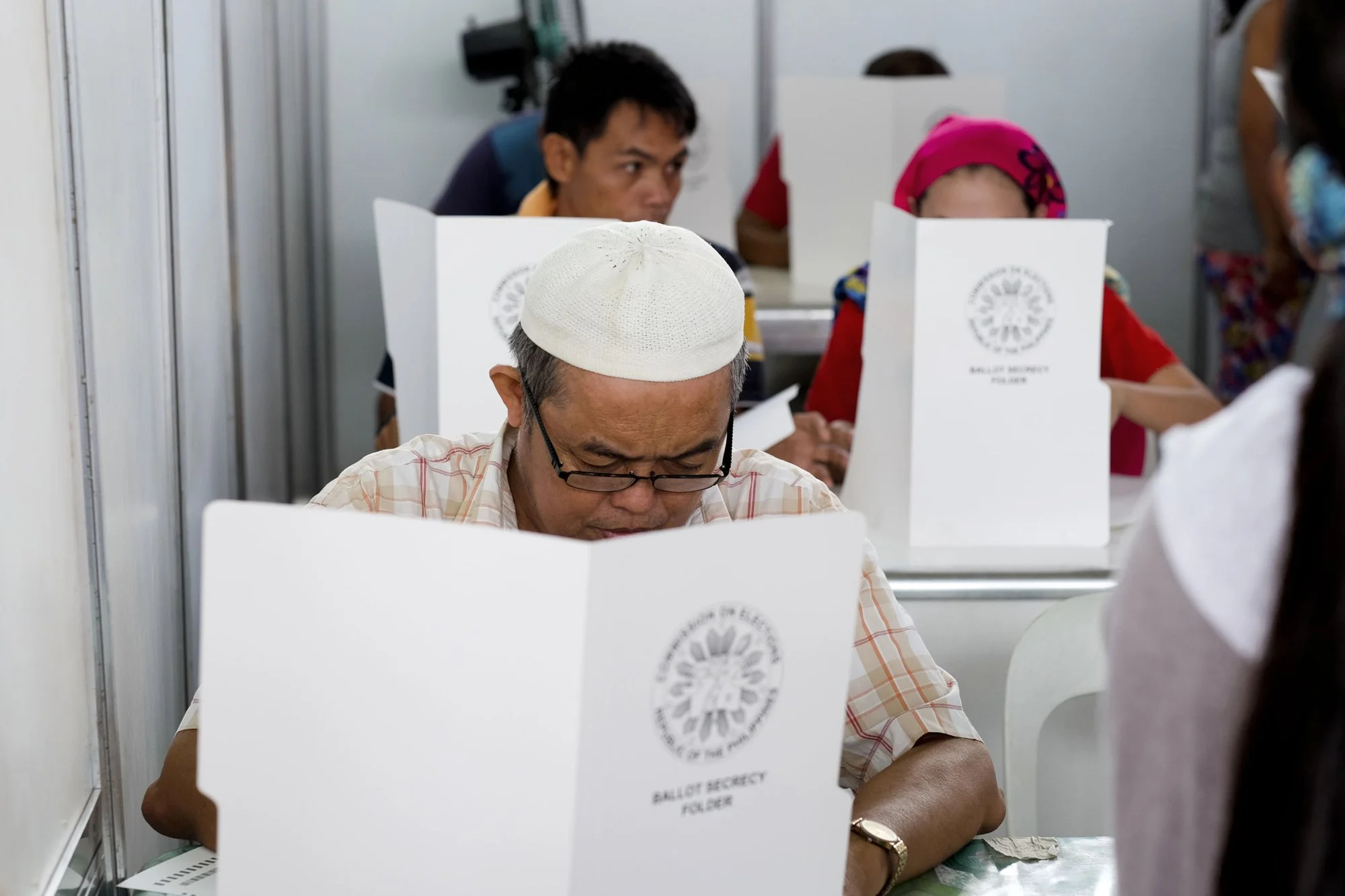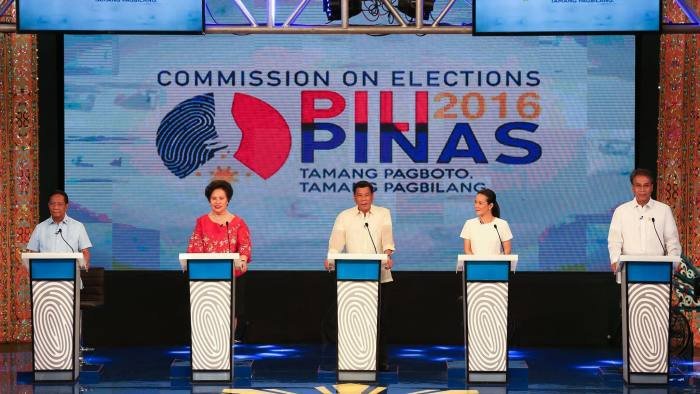Safeguarding Democracy
/Filipino voters head to the polls to elect a new president in 2022 (Photo by Veejay Villafranca/Bloomberg)
This is the continuation of last week’s article, “Gaming Philippine Democracy.”
"It's a big lie because you have to disbelieve all kinds of evidence to believe in it. It's a big lie because you have to believe in a huge conspiracy in order to believe it.” - Timothy Snyder, "On Tyranny"
Source Code Review
To ensure the integrity of the automated election system (AES), Republic Act No. 9369 mandates several safeguards, including the requirement of a technical review. The 2010 and 2013 elections were each preceded by a one-month review while the 2016 NLE afforded more comprehensive seven-month scrutiny of the AES. De La Salle University hosted a group of stakeholders and independent technical auditors who satisfied themselves that the 2016 AES did what it was supposed to do, and that it did so correctly.
Contemporaneous with the local review, U.S-based SLI Global conducted a six-month testing of the software, firmware and hardware components of the AES as well as its master blueprint or source code.
All information generated was provided to the Technical Evaluation Committee (TEC), composed of representatives from the Comelec, the Department of Information and Communications Technology and the Department of Science and Technology, which issued the TEC Certification as required by law -- a “seal of approval” stating the AES operated properly, securely, and accurately.
Random Manual Audit
Section 29 of R.A. 9639 mandates the conduct of a random manual audit (RMA) in one precinct per congressional district randomly chosen by Comelec in each province and city.
The Random Manual Audit Committee (RMAC) was composed of representatives from the National Citizens' Movement for Free Elections (NAMFREL), the Philippine Statistics Authority and Comelec. The RMAC audited 687 voting precincts, which was more than double the requirement mandated by law.
The RMA tested the accuracy of the machine count. The audit disclosed that the machine and manual counts matched 99.9023% of the time.
The small variance was due to the different appreciation of the machine and a human audit team member of partly-shaded ovals.
A volunteer performing a random manual audit (Source: Rappler)
Presidential/Vice Presidential debates
For the first time in Philippine electoral history, voters had the opportunity to assess the candidates through three Presidential debates in the main islands of Luzon, Visayas and Mindanao. The Comelec partnered with quad-media (television, radio, print, and online) and Universities located in Cagayan de Oro, Cebu, and Dagupan to organize and host the debates. UST Manila was the venue of the Vice Presidential debate.
The 2016 Presidential debate (Cagayan de Oro) with former Vice President Jejomar Binay, Senator Miriam Defensor Santiago, Davao Mayor Rodrigo Duterte, Senator Grace Poe, and Secretary Mar Roxas (Source: AFP)
The 2016 Vice Presidential debate with Senator Antonio Trillanes, Camarines Sur Representative Leni Robredo, Senator Bongbong Marcos, Senator Gregorio Honasan, Senator Chiz Escudero and Senator Alan Peter Cayetano (Source: CNN Philippines)
A study entitled “Rethinking Debates” by the U.S.-based Civic Hall and Democracy Fund cited the Comelec for its innovative use of social media resulting in 303 million election-related posts and 1.9 million tweets under the hashtag #PiliPinasDebates, the highest engagement on Twitter for a presidential debate.
Mall Registration and Voting
With a view to enhancing voter comfort and convenience, the Comelec teamed up with various malls all over the country. Over 500,000 voters registered in well-lit and ventilated mall spaces as opposed to Comelec’s often cramped and tired premises. We laid the groundwork for mall voting, which hopefully will be implemented in the 2022 elections.
Election Observers
There were several Philippine and international watchdogs that observed the 2016 NLE.
NAMFREL, which has monitored Philippine elections since 1992 stated: “the 2016 election was better managed than the past two elections held in 2010 and 2013.”
The Parish Pastoral Council for Responsible Voting (PPCRV) shared: “the 2016 NLE was a shining moment for the country, Comelec and PPCRV. It was by far the best of the three automated elections since 2010.”
The Parish Pastoral Council for Responsible Voting (PPCRV) at their monitoring center at the Pope Pius XII Catholic Center in 2016 (Source: Rappler)
Democracy Watch commented: “The 2016 Philippine elections have generally received positive assessment from various stakeholders. In addition, these elections were better managed than those held in 2010 and 2013, with the electorate having greater confidence in the system in 2016 than in the past.”
The Atlanta-based Carter Center (of former President Jimmy Carter), another regular observer of Philippine elections, noted: “most electoral stakeholders seemed to feel that the automated elections of 2016 marked a significant improvement over previous Philippine elections.”
“The RMA tested the accuracy of the machine count. The audit disclosed that the machine and manual counts matched 99.9023% of the time.”
Accolades
The Comelec received several awards from the London-based International Center for Parliamentary Studies (ICPS), a research institution of the United Nations Public Administration Network, which recognizes election management bodies for outstanding performance in election work.
During the ICPS’ 2016 International Electoral Awards held in Maputo, Mozambique, Comelec was conferred the coveted Election Commission of the Year “based on a track record that demonstrates efforts on fostering a community of good citizens among election practitioners, best practice, evidence-based research and policy in the field of elections.”
It received the Election Management Award for surpassing “country specific challenges to guarantee a secure, transparent and smooth running of elections.”
“Why does the big lie that cheating occurred persist in social media? To maintain the narrative of an underdog for 2022.”
It received the Accessibility Award for including in the electoral process groups which have been excluded due to physical, social, cultural or geographical impediments and the Minority Participation Award for its efforts in strengthening minorities’ rights to register and cast their vote.
The 2016 NLE registered the highest voter turnout in the history of Philippine automated polls at 81.95 percent, with the fastest transmission rate of 96.14 percent.
Smartmatic
Poll worker checks on Smartmatic voting machine (Source: Straits Times)
Let me directly address the claim that I conspired with Smartmatic to cheat the Vice Presidential race. This is a complete fabrication.
Smartmatic is a UK-based electronic voting and technology company that has helped run thousands of elections worldwide. During the country’s first automated elections in 2010, Smartmatic won the bid to become Comelec's automation partner. The company was again chosen for the 2013 mid-term polls. When two Commissioners and I assumed office in May 2015, Smartmatic had, for all intents and purposes won the competitive bidding for the 2016 NLE and it was merely a formality for the Comelec En Banc to award the contract to it. Despite the new administration’s negative public pronouncements, Smartmatic was still chosen by Comelec for the 2019 mid-terms and again, for the upcoming 2022 elections.
Ergo, I did not choose Smartmatic. It was there way before I assumed office and remains Comelec’s automation provider long after I left in October 2017.
2016 Post-Election Survey
In a Pulse Asia survey of 1,200 voters, conducted from July 2-8, 2016, nine in 10 found the May 9 election results “believable” and conveyed a “generally positive assessment” of the polls. Also, virtually all Filipinos thought the elections were orderly, with the release of the poll results fast and no violence occurring in their localities.
Yet, notwithstanding an almost universal commendation of the 2016 NLE and a unanimous Supreme Court decision dismissing the vice presidential protest, why does the big lie that cheating occurred persist in social media? To maintain the narrative of an underdog for 2022.
The paradox of the Big Lie is that it requires a willful disregard of abundant evidence and a willful credulity on zero evidence. Faced with this delusion and confusion, the Filipino voter will need to step up to safeguard our democracy.
*Before serving as chairperson of the Philippine Commission on Elections (2015-17) and Presidential Commission on Good Government (2010-15) the agency tasked to recover the Marcos ill-gotten wealth, Andy Bautista worked with two international law firms in New York and Hong Kong (1993-2006). He also served as dean of the Far Eastern University Institute of Law (1999-2013).
More articles from Andres D. Bautista









